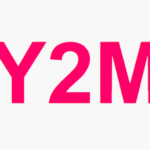The Software as a Service (SaaS) industry has transformed business operations by providing scalable, subscription-based software solutions via the Internet. SaaS has become essential for modern enterprises, offering tools for project management and customer relationship management (CRM). As technology advances, the future of saas development holds exciting potential. This article explores some key trends and developments expected in the SaaS industry over the next five years.
1. AI and machine learning integration
Artificial Intelligence (AI) and Machine Learning (ML) are already making significant inroads into SaaS, but their impact will deepen in the coming years. SaaS platforms will increasingly use AI to provide smarter, more automated solutions that improve efficiency and decision-making. For example:
- Predictive Analytics: SaaS applications will offer advanced analytics capabilities that not only present historical data but also predict future trends, helping businesses make proactive decisions.
- Personalization: AI-powered algorithms will allow more personalized user experiences, adapting software behavior based on individual user needs and preferences.
- Automated Support: AI-driven chatbots and virtual assistants will handle a broader range of customer service tasks, freeing up human agents for more complex issues.
The convergence of AI with SaaS will create more adaptive, intelligent, and efficient software solutions that continuously learn from data and user interactions.
2. Increased focus on security and compliance
As the number of cloud-based solutions grows, so do concerns about data security and regulatory compliance. Over the next five years, SaaS companies will face mounting pressure to enhance their security measures and ensure compliance with various global standards. Key areas of focus will include:
- Data Encryption: More SaaS providers will adopt end-to-end encryption to protect sensitive data during transmission and storage.
- Zero-Trust Security Models: The zero-trust approach, which assumes no user or device can be trusted by default, will become more common in SaaS applications.
- Regulatory Compliance: As data protection laws evolve (such as GDPR in Europe and CCPA in California), SaaS providers will need to adapt quickly to ensure compliance across multiple jurisdictions.
SaaS vendors that prioritize robust security practices will gain a competitive edge, especially in industries that handle sensitive data, like healthcare and finance.
3. Vertical SaaS solutions
While traditional SaaS products often target broad markets, the future will see a rise in vertical SaaS — solutions tailored for specific industries. Vertical SaaS aims to solve unique challenges within niche markets such as healthcare, retail, or education. This trend is driven by the need for highly specialized software that addresses industry-specific requirements:
- Healthcare SaaS could focus on patient data management and compliance with healthcare regulations.
- Retail SaaS might offer advanced inventory management or customer behavior analytics tailored to the retail environment.
- Educational SaaS could provide learning management systems with features designed for different types of educational institutions.
The development of vertical SaaS will allow businesses to choose software that fits their precise needs rather than settling for one-size-fits-all solutions.
4. SaaS for the internet of things (IoT)
The Internet of Things (IoT) is experiencing rapid growth, with billions of connected devices generating massive amounts of data. SaaS platforms will play a vital role in managing and analyzing this data. In the next five years, expect to see SaaS solutions specifically designed to integrate with IoT devices, providing businesses with valuable insights and control over their connected ecosystems:
- IoT Analytics Platforms: SaaS applications will offer real-time monitoring and analysis of data from IoT devices, helping businesses optimize operations.
- Device Management: SaaS will enable businesses to manage their IoT devices remotely, updating firmware, troubleshooting issues, and ensuring security across all connected endpoints.
- Predictive Maintenance: SaaS platforms can use IoT data to predict when equipment is likely to fail. This helps companies perform maintenance before problems occur.
The integration of SaaS with IoT will help organizations harness the full potential of connected devices, transforming industries such as manufacturing, logistics, and smart cities.
5. Evolution of pricing models
As the SaaS market matures, pricing strategies will evolve to meet changing customer expectations. Subscription fatigue is becoming a concern, with users growing wary of multiple ongoing payments. To address this, SaaS providers will experiment with innovative pricing models:
- Usage-Based Pricing: Instead of paying a fixed monthly fee, customers will be charged based on actual usage (e.g., data processed or number of transactions). This model is appealing to businesses looking to scale costs with their growth.
- Freemium to Premium Upgrades: More SaaS products will offer robust free tiers with optional premium features. This approach allows users to test the software before committing to a paid plan.
- Customizable Plans: SaaS companies may allow customers to build their own pricing plans, select specific features they need, and pay accordingly.
These flexible pricing models will cater to diverse business needs, helping companies of all sizes to find plans that align with their budgets and requirements.
6. Enhanced user experience and No-Code/Low-Code platforms
The demand for intuitive, user-friendly software will drive advancements in user experience (UX) design. As part of this shift, no-code and low-code platforms will continue to gain popularity, allowing non-developers to create and customize SaaS applications with minimal coding knowledge.
Key benefits include:
- Faster Development: Businesses can launch new SaaS solutions quickly without relying heavily on software developers.
- Cost Savings: Reduced development time and lower reliance on technical staff can result in significant cost reductions.
- Greater Accessibility: No-code and low-code platforms democratize software development, making it accessible to a wider range of users.
These trends will transform the way software is created, enabling more businesses to innovate and adapt software solutions to their unique needs.
Conclusion
The next five years are expected to be a dynamic period for SaaS development. Rapid advancements driven by AI integration, industry-specific solutions, IoT expansion, evolving pricing models, and no-code development tools are on the horizon. These trends will make SaaS more intelligent, secure, and accessible, reshaping the business landscape across various sectors. Companies that stay ahead of these changes will be well-equipped to use the potential of SaaS to boost growth and efficiency.
As technology progresses, one thing is certain: SaaS will continue to be at the forefront of digital transformation, allowing businesses to adapt, innovate, and thrive in a fast-changing world.











Leave a Reply